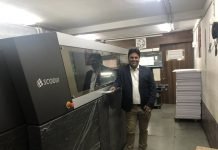We are hoping that our way of looking at the April–March financial year to benchmark the Indian packaging industry’s growth will continue to scale its growth trajectory. Although the packaging industry has been growing in the past four years, there is no denying that it has been looking for the significant upturn that should come from being one of the fastest growing economies in the world. Capacity has been created continuously over the past decade and in the initial years, the growth was spectacular because of the small base. In the past four years there have been various speed breakers including a period of high oil prices, poor monsoons and a consumer product economy with uneven growth. Even last year, leading converters making large and structured investments suggested waiting for demand recovery till Q3 and Q4 of 2016–17!
The bountiful monsoon was allset to boost rural demand and the GST bill passed in parliament gave hope that 7–8% GDP growth was around the corner. The huge capacity creation in the packaging converting industry in the current financial year is actually part of a long-term growth story, which will continue in the next couple of years since it is almost impossible to create or add to capacity within a single year and it is equally impossible to anticipate demand. Occasionally there are imperatives to rush projects, which include taking advantage of state subsidies that have a deadline. As one of our industry friends remarked recently, packaging capacity has to be looked at as infrastructure and the demand curve will typically follow.
Thus, in all categories such as flexible and paperboard packaging, labels, semi-rigid, rigid and transport packaging, there has been strong capacity creation in all of South Asia— Bangladesh, India, Pakistan, Nepal and Sri Lanka. New board lines have progressed from trials to production and market acceptance. Many of the new packaging film lines under construction are aimed at new products and several are wider and faster than before with a huge rise in complexity, automation and optional features to add value.
The past year has seen an influx of around 30 high-quality gravure presses in South Asia, including about a dozen from leading global manufacturers such as Bobst and W&H, and the rest from high-quality Asian suppliers including the India-based Pelican, Kohli and Expert. Wide web flexo presses have been installed in unprecedented numbersfrom suppliers such as Bobst, Comexi, W&H, KYMC and Uteco, and there are a couple of technical collaboration projectsto manufacture wide web flexo presses in India by Uflex and Manugraph.
The monocarton industry has imported about two dozen highly configured 7- and 8-color full UV presses in the current financial year. The ten leading monocarton manufacturers in South Asia are adding capacity at an almost breakneck pace in anticipation of a strong pickup in future demand. The label industry, which has already undergone some consolidation, has also kept pace. Perhaps the most notable rise in modernization and increased capacity is coming from the corrugated industry. This year has seen some of the larger Indian players investing in European BHS corrugation lines and flexo printer, converter and gluer machines from the likes of Emba and Bobst.
Thus, capacity creation continues apace notwithstanding some of the day-to-day disruptions and upticks in demand. However, new entrants and some of the mid-size players in India at least will continue to face challenges because of the recent drop in consumer demand due to demonetization. In this largest economy in South Asia, generally reliable experts are now forecasting a demand recovery to double-digit growth in the August–September 2017 time frame.
Note: This article was originally published in the January 2017 issue of Packaging South Asia


















